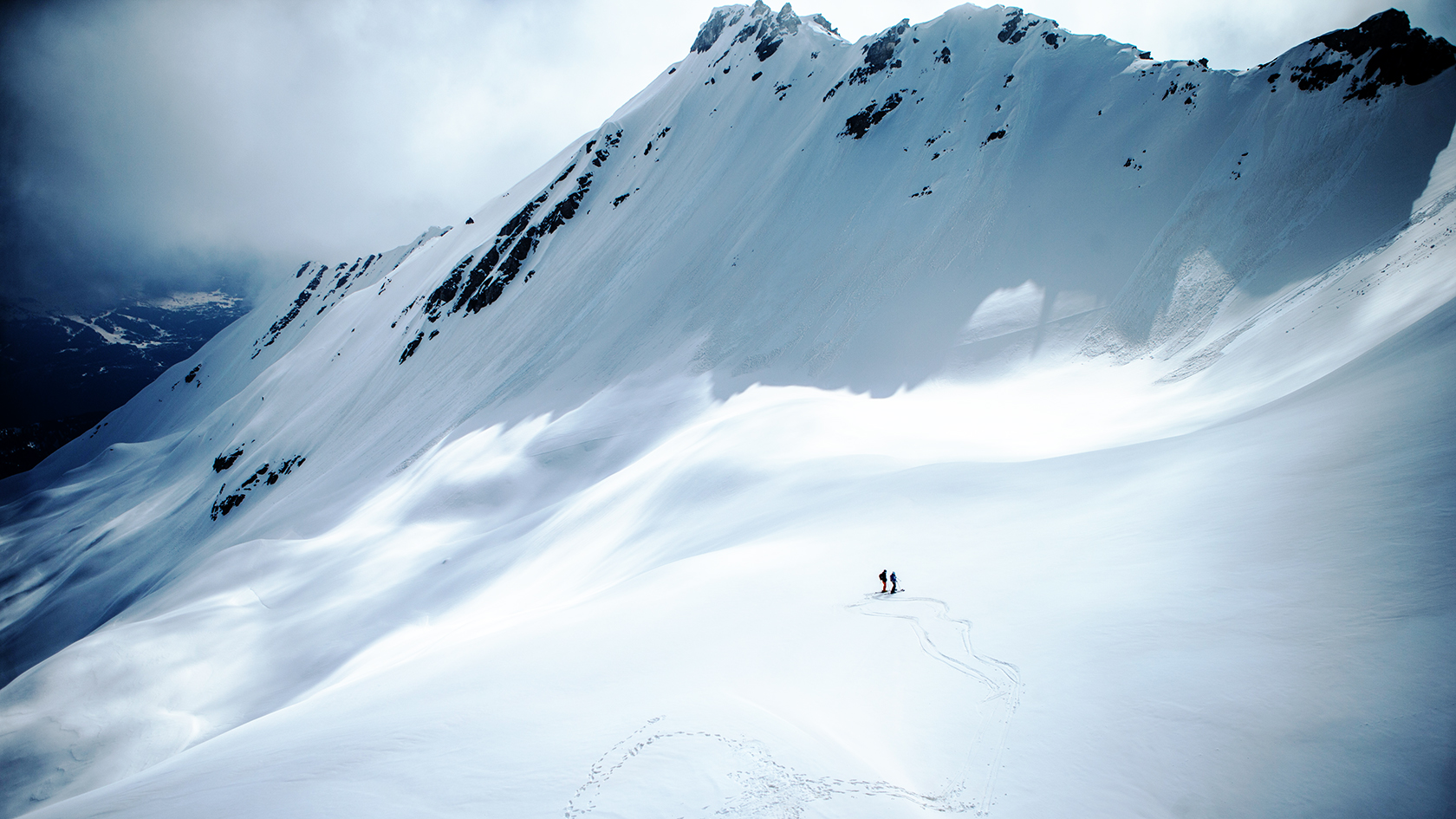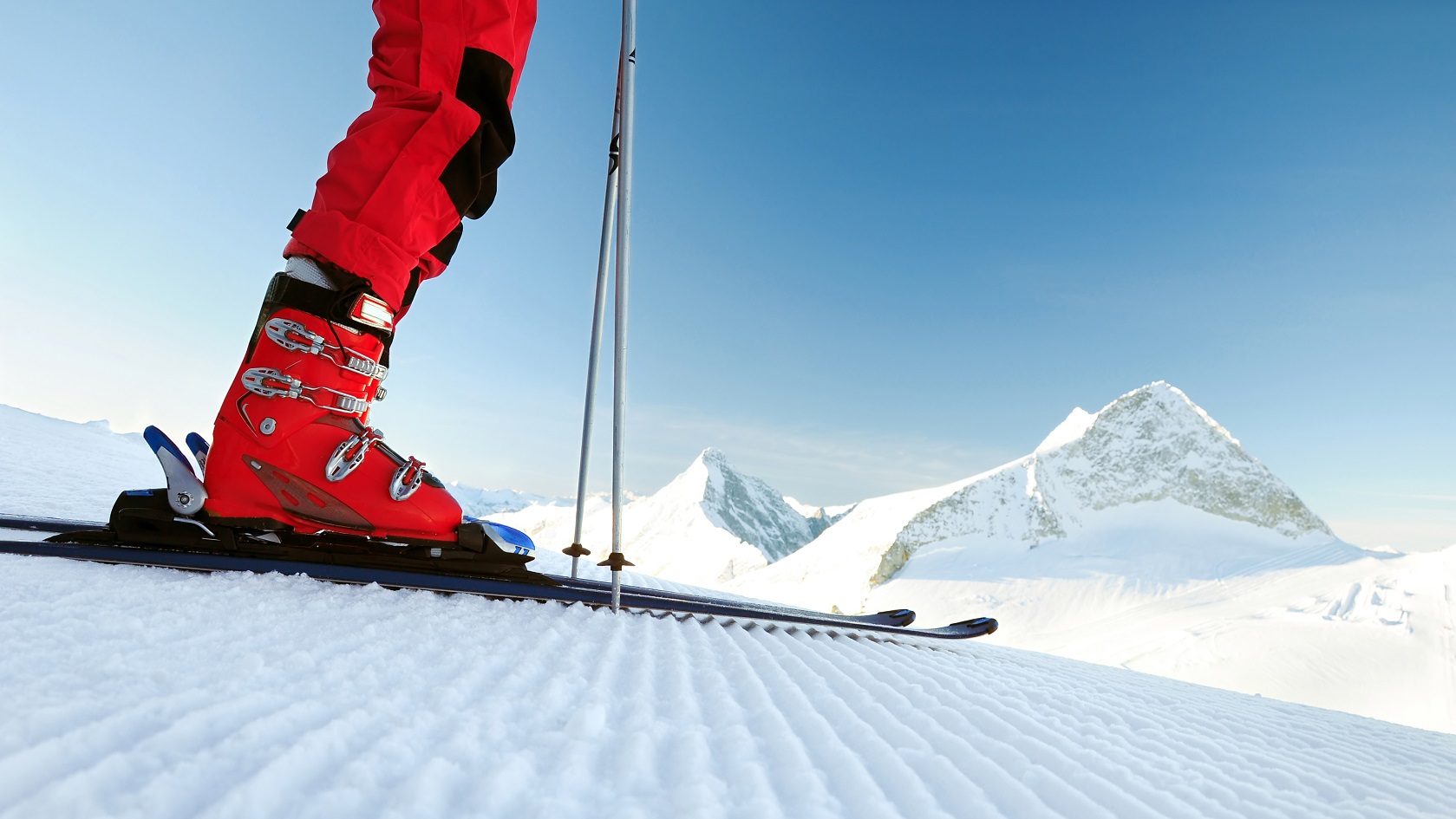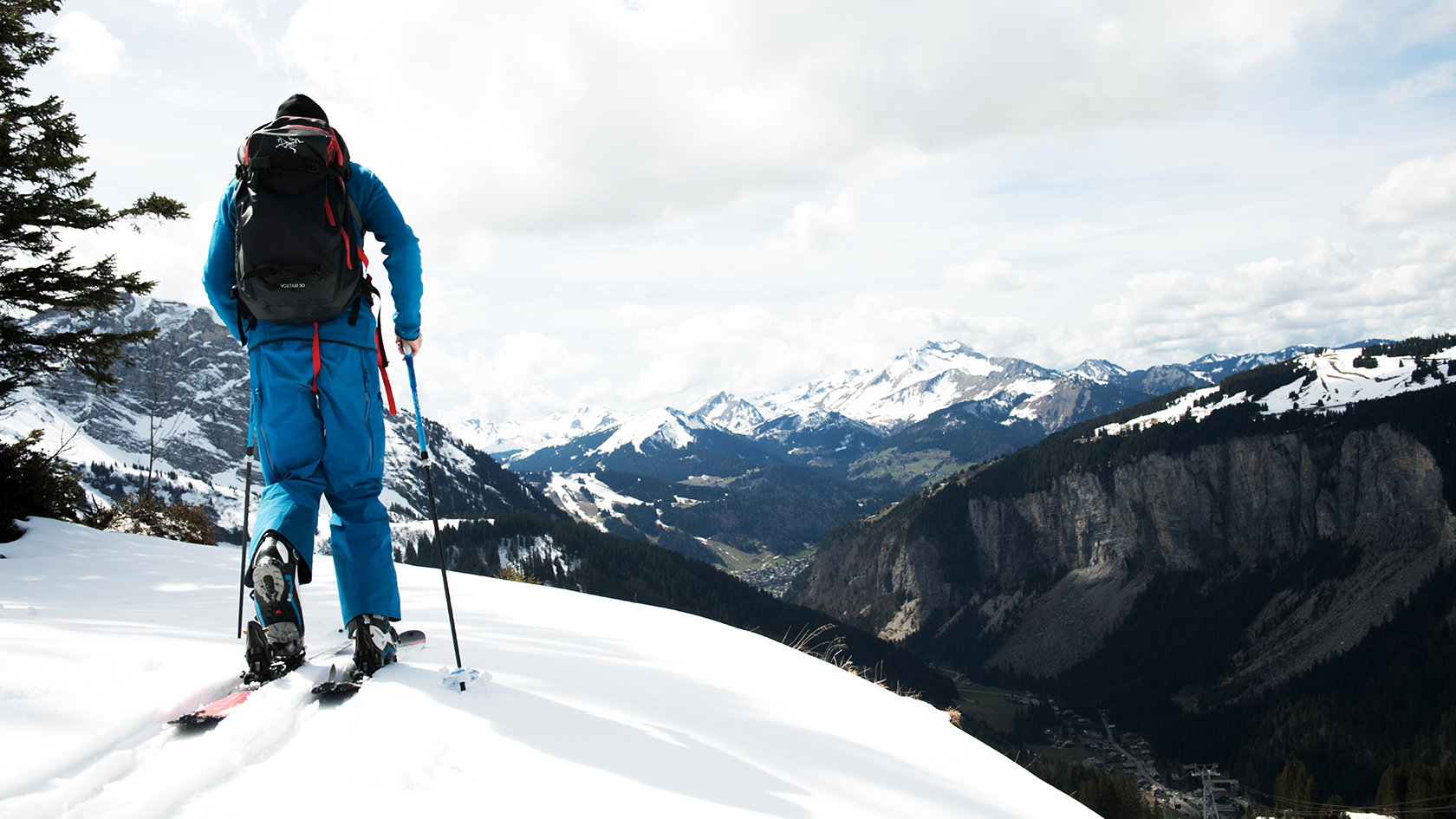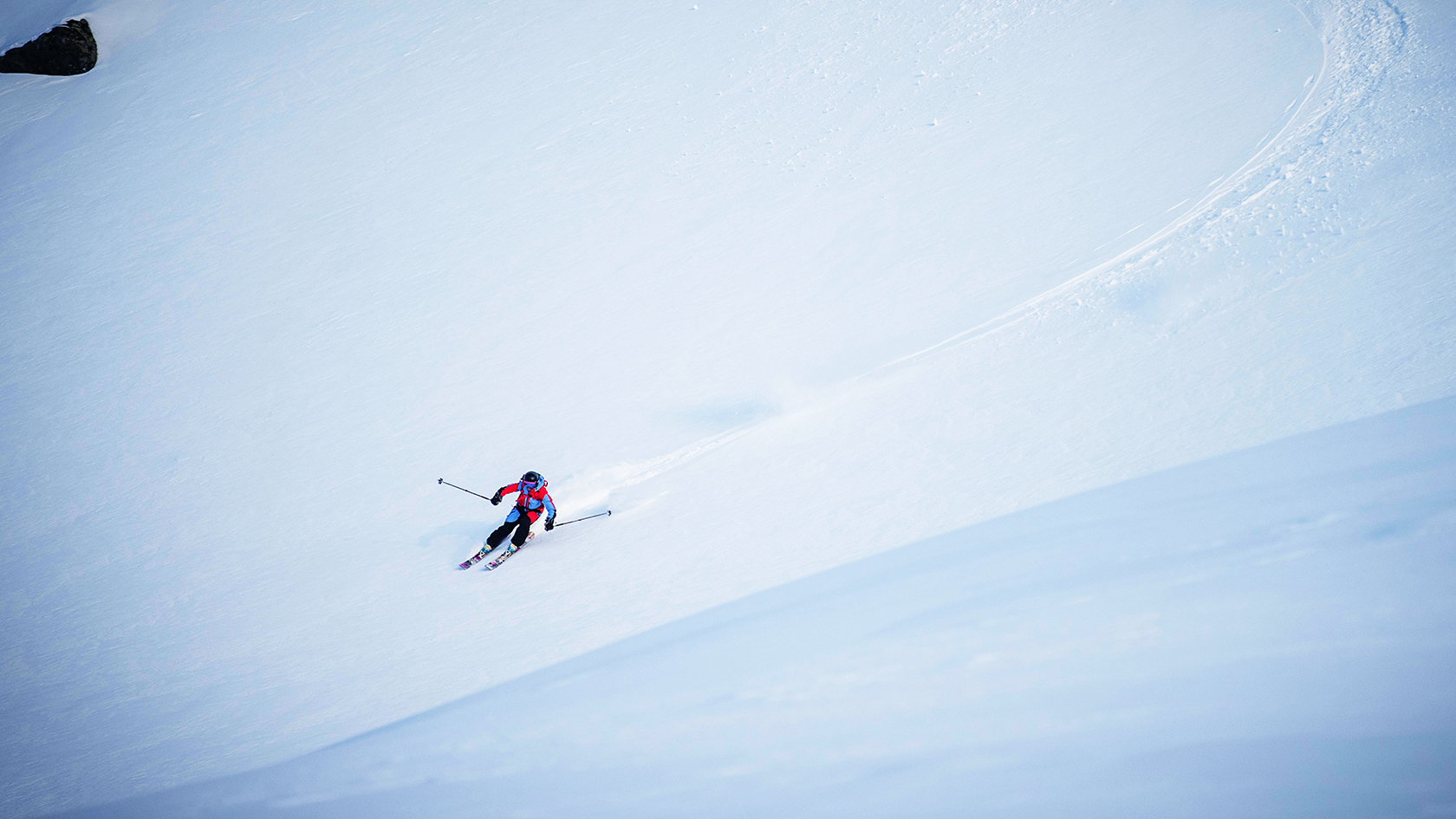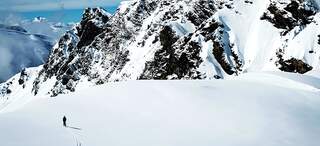How to Buy Alpine Touring Boots
Also known as randonnée, alpine touring is increasing in popularity. If you’re a skier making the jump to backcountry or alpine touring your boots are as important as ever.
We’ll take you through the following information to help you choose the right alpine touring ski boot for you:
- Why AT ski boots?
- Uphill weight and downhill performance
- Fit
- Compatibility
- Choosing the right pair
- Alpine touring ski boot FAQs
Our stores have a wide range of alpine touring ski boots, so if in doubt, visit us in store and get expert advice from our knowledgeable staff.
Why Alpine Touring Ski Boots?
Alpine touring ski boots are different from regular alpine ski boots as they’re designed for ascending the hill with the help of climbing skins as well as for downhill skiing. They will be lightweight and have a specific ski mode with support, and a flexible ‘walk’ mode that allows your ankle and calf to flex forward and backwards for skiing and hiking uphill. Finally, they will have a rockered (curved) and lugged rubber sole more like hiking boots for better grip on slippery surfaces letting you walk more naturally.
Uphill Weight and Downhill Performance
Advancements in alpine touring (AT) boot technology mean that many modern AT boots now rival traditional alpine boots in stiffness and downhill performance. These boots often feature a walking hinge and lugged soles, and their weight is increasingly similar to that of alpine boots, making them a great choice for experienced skiers who demand power and control for fast descents or big jumps.
Performance-Oriented AT Boots
- Match alpine boots for downhill stiffness and support
- Include features like a walking hinge and lugged rubber soles for added versatility
- Typically weigh between 1,400g and 1,600g per boot, similar to many alpine models
- Ideal for aggressive skiers who prioritise performance on the descent
If you’re an advanced skier who enjoys skiing fast, tackling technical terrain, or hitting large jumps, these high-performance AT boots will provide the power and precision you need.
Lightweight Touring Boots
On the other hand, lightweight AT boots are designed primarily for efficiency on the uphill. These boots are significantly lighter—sometimes under 1,200g per boot—making long climbs and extended tours less fatiguing.
- Easier and more comfortable for long ascents or multi-day tours
- Offer a greater range of motion in walk mode for natural stride
- Prioritise uphill efficiency over maximum downhill power
- May have less stiffness and support for aggressive skiing on the descent
Depending on your skiing ability and style, lightweight touring boots might be your preferred option if your focus is on covering distance, climbing efficiently, or if you’re newer to backcountry skiing and don’t need maximum downhill performance.
Fit
Getting the right fit in your alpine touring boots is crucial for comfort and performance, especially because the increased range of motion on the uphill can create more opportunities for rubbing and chafing. A well-fitting boot helps prevent blisters and pressure points, ensuring you can focus on your tour rather than your feet.
Key Fit Considerations
Snug but Not Tight: Your boots should feel snug all around your foot and leg, but not so tight that they cut off circulation or cause pressure points. Your toes should just touch the end of the liner when standing upright, but pull back slightly when you flex forward.
Shell Fit: Remove the liner and place your foot in the shell. There should be about 1.5 fingers (roughly 1–1.5 cm) of space behind your heel for a good balance of comfort and performance. Alpine touring boots can have a little more room than alpine boots, which helps with comfort on long ascents.
Room for Movement: Some experienced backcountry skiers prefer a slightly longer fit to accommodate loosened or undone top buckles on the uphill, which allows for more movement and reduces the risk of rubbing.
Heel Hold: Ensure your heel stays in place to avoid blisters—heel lift can quickly lead to discomfort on long tours.
Width (Last): The last, or width of the boot, should match your foot shape. Narrow feet typically fit best in lasts around 98 mm, while wider feet need 102 mm or more.
Custom Features for Better Fit
Heat-Moulded Liners: Many alpine touring boots come with heat-mouldable liners, which can be customized to the shape of your foot for a warmer and more precise fit.
Custom Footbeds: Upgrading to custom or cut-to-fit insoles can further enhance comfort and support, especially if you have unique foot issues or need extra arch support.
Adjustable Buckles and Cuffs: Modern boots often feature adjustable buckles and cuffs to fine-tune the fit around your calf and shin.
Compatibility
Choosing the right alpine touring (AT) boots isn’t just about comfort and performance—it’s also essential to ensure they are compatible with your ski bindings. Not all AT boots work with every type of binding, so double-checking compatibility before you buy is crucial for both safety and performance.
Key Points to Consider
Check Before You Buy: Always confirm that your boots and bindings are compatible. If you’re unsure, consult a knowledgeable staff member or refer to manufacturer guides.
Tech (Pin) Bindings: These require boots with specific tech fittings—moulded-in metal inserts at the toe and a slotted plate at the heel. Only boots with these fittings will work with tech bindings.
Frame Bindings: Most frame bindings are more versatile and will work with both alpine touring boots and regular alpine ski boots, making them a good choice if you want flexibility in your setup.
Multi-Norm Compatible (MNC) Bindings: MNC bindings, also labeled as MN or Sole.ID, are designed to work with a wide range of boot soles, including Alpine (ISO 5355), Touring (ISO 9523), and GripWalk (ISO 23223) soles.
GripWalk Bindings: These are compatible with both GripWalk and traditional alpine soles, but may not work reliably with touring soles unless specifically stated.
Types of Boot Soles and Binding Compatibility
Alpine (ISO 5355): Flat, hard plastic soles for resort skiing. Compatible with traditional alpine and MNC bindings.
GripWalk (ISO 23223): Rockered, rubber soles for easier walking. Compatible with GripWalk and MNC bindings.
Touring (ISO 9523): Rockered soles with tech inserts for backcountry skiing. Compatible with tech/pin bindings, frame bindings, and MNC bindings.
Choosing The Right Pair
Finding the right alpine touring boot that allows you to ski comfortably and confidently in all terrain and conditions can be tricky, especially when you think about how you might feel on any given day. Many skiers, even the experts, are always changing their mind on what boot works best so don’t worry if it takes you a while to find the perfect pair.
If you’re not sure, choose a slightly heavier and more supportive boot as the added security will help you enjoy the ride down.
Alpine Touring Ski Boot FAQs
Start by considering your skiing style—whether you prioritise uphill efficiency or downhill performance. Touring-specific boots are lighter with more cuff motion for climbing, while hybrid boots offer more support for descents. Always ensure your boots fit well and match your bindings for safety and comfort.
Alpine touring boots have a walk mode for uphill flexibility and a ski mode for downhill support. They’re lighter, have rockered soles for better grip, and are designed for both climbing and skiing, unlike regular alpine boots which focus solely on downhill performance.
Fit is crucial for comfort and performance. AT boots should feel snug but not tight, allowing some extra room compared to alpine boots for long tours. Try on several models, and consider thermo-moldable liners for a custom fit that reduces pressure points and blisters.
No, compatibility depends on the type of binding. Tech bindings require boots with tech (pin) fittings, while frame or hybrid bindings may accept more traditional boot soles. Always check that your boots and bindings are designed to work together before buying.
Many alpine touring boots, especially hybrid models, can be used for both touring and resort skiing. They offer enough stiffness for downhill runs and the flexibility needed for climbing, making them a versatile choice for mixed skiing styles.
Look for a lightweight design, a reliable walk/ski mode, a comfortable liner, and a sole with good grip for walking. The right balance of weight, stiffness, and cuff range of motion will depend on whether you prioritise uphill travel or downhill power.
Related Articles

Let us know you agree to cookies
We use marketing, analytical and functional cookies as well as similar technologies to give you the best experience. Third parties, including social media platforms, often place tracking cookies on our site to show you personalised adverts outside of our website.
We store your cookie preferences for two years and you can edit your preferences via ‘manage cookies’ or through the cookie policy at the bottom of every page. For more information, please see our cookie policy.

